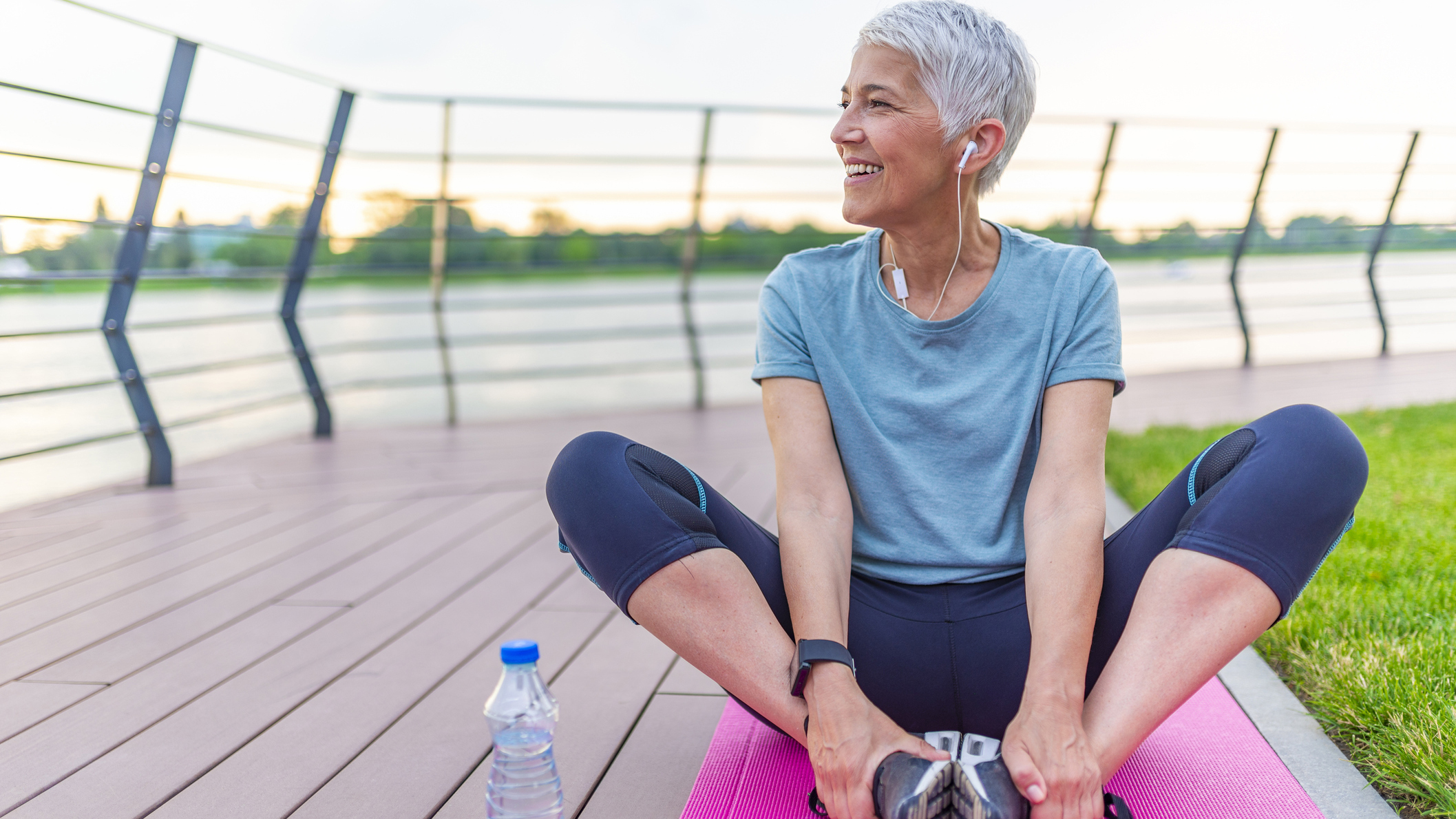
Talk to almost anyone and they can tell you about a body part that’s stiff, sore, or suffering.
One of the best ways to fix this can be adding more movement into your day—and this particular move is a great place to start, according to sports and injury therapist Emma-Burgon-Kisby.
"More than 40% of people will suffer from discomfort in the lower back and hips at some point in their life," the Lincs Injury Clinic founder tells me.
"A hamstring hold could alleviate and prevent lower back and hip pain. It targets the hamstrings while also engaging the glutes [butt muscles] and stabilizing the core."
This is important because the hamstrings and glutes work together to support the lower back, "reducing the strain on this area that often leads to pain".
How to do the hamstring hold
- Lie flat on your back with your arms placed by your sides, palms down. Point your toes up then reach them back towards your knees.
- Pushing through your heels and keeping your legs straight, lift your butt just off the floor.
- Lift your right leg until it forms roughly a 45° angle with the floor, and hold this position.
- Hold this position for up to 30 seconds, then repeat on the other leg.
Why should you do the hamstring hold?
Sitting down is a huge part of modern life. Many of us sit all day at work, sit on the couch to relax in the evening, and even sit in the car to travel between work, home, and hobbies.
This sedentary lifestyle is part of the reason lower back and hip pain are such common complaints, Burgon-Kisby tells me.
"Poor posture and lack of physical activity weaken the muscles that support our spine and pelvis," she says.
"The hamstring hold can strengthen these muscles, improving posture and reducing the risk of developing pain in these areas.
"Considering that a large portion of the population doesn't meet the recommended levels of physical activity, incorporating simple yet effective exercises like this can make a significant difference—and it doesn’t require any equipment!”
The hamstring hold is also helpful for those who lead an active lifestyle, Burgon-Kisby adds.
"It not only helps in strengthening the hamstrings but also improves the stability of the hips and lower back—essential for optimal performance and injury prevention."
Who should approach this move with caution?
Burgon-Kisby says most people could benefit from this move, so it naturally has a wide target market. But some people should be more cautious about trying it.
"Individuals with existing severe lower back or hip pain, or those awaiting surgery, should proceed with caution and build up slowly," she says.
If you're looking for more ways to fight the effects of sitting down all day, try these exercise snacking workouts or have a go at these hip stretches.
Need something soft to support your new exercise regime? Our guide to the best yoga mats can help







